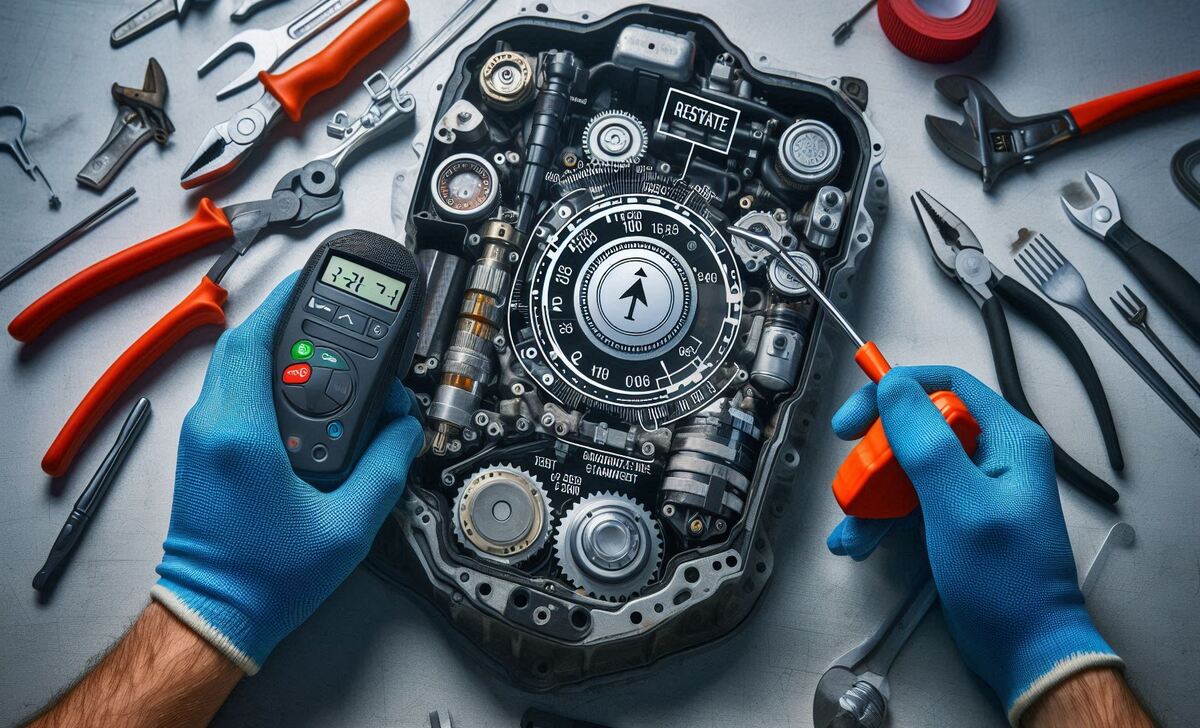Maintaining the transmission of your Mercedes Benz is crucial for ensuring optimal vehicle performance and longevity.
The transmission system is responsible for transferring power from the engine to the wheels, and any issues can significantly affect your driving experience. Regular maintenance helps prevent transmission problems, but sometimes, a reset might be necessary to resolve issues such as erratic shifting or transmission error messages.
A transmission reset can recalibrate the system and restore smooth operation, often saving time and cost compared to more extensive repairs. Understanding when and why a transmission reset is needed can help you maintain your Mercedes Benz in top condition and enhance your overall driving satisfaction.

Symptoms Indicating A Need For Transmission Reset

If you own a Mercedes-Benz and notice issues such as sluggish acceleration or delayed gear shifts, it might be time to consider a transmission reset. Common indicators include transmission error messages on the dashboard, unusual noises or vibrations during gear changes, and the vehicle entering limp mode.
Whether you drive a manual transmission or an automatic, these symptoms can signal underlying problems that a reset can potentially address by clearing fault codes and recalibrating the system.
- Sluggish acceleration or delayed gear shifts: If your car hesitates or takes longer than usual to change gears, a transmission reset may be needed.
- Transmission error messages on the dashboard: Alerts and warning messages regarding transmission issues indicate a potential need for a reset.
- Unusual noises or vibrations during gear changes: Strange sounds or vibrations when shifting gears can signal transmission problems.
- Vehicle entering limp mode: When your car limits its speed to protect the transmission, it often requires a reset to clear fault codes and restore normal operation.
Preparing For The Reset
When preparing to reset the transmission in a Mercedes-Benz, specific steps are essential to ensure safety and accuracy.
Start by making sure the vehicle is on a level surface. Turn off the engine to prevent any unintended movement or accidents. Gather the necessary tools, including diagnostic equipment. Check that the battery is fully charged to avoid interruptions during the reset.
The reset process typically involves the transmission control module and the engine control unit. These components work together to manage the vehicle’s automatic transmission, controlling the shift and valve body operations. Properly resetting these components can resolve shifting issues and improve overall transmission performance, ensuring smoother and more reliable operation.
Step-By-Step Guide To Resetting The Transmission

Follow these steps to reset the transmission:
- Insert the key and turn it to position II (without starting the engine).
- Press the gas pedal fully and hold it down for about 10 seconds.
- Turn the key to the off position while keeping the gas pedal pressed.
- Release the gas pedal and wait a few minutes before starting the car.
Post-Reset Procedures

After resetting your Mercedes-Benz transmission, it’s essential to ensure that the system is functioning correctly. Here’s how to proceed with post-reset checks to ensure optimal performance:
- Starting the vehicle: Begin by starting the Mercedes vehicle and allowing it to idle for a few minutes.
- Taking it for a test drive: Take the car for a test drive, paying close attention to how it shifts through the gears.
- Observing any changes in transmission behaviour: Monitor the throttle response and shift quality, especially noting any issues in the 2nd gear.
- Repeating the reset process if necessary: If you notice any problems, repeat the reset process to ensure all settings are properly configured.
Hints:
- Starting the vehicle and taking it for a test drive.
- Observing any changes in transmission behaviour.
- Repeating the reset process if necessary.
When To Seek Professional Help
For Mercedes-Benz vehicles, including electric vehicles, transmission issues can be complex and require professional attention. Persistent problems, such as difficulty shifting into second gear or higher gear or unusual noises during gear changes, are signs that you should seek the expertise of a certified mechanic.
While some minor issues might seem resolvable with a DIY reset, these methods often don’t address underlying problems and may provide only temporary relief.
In cases where the transmission shows consistent symptoms or where there’s potential for damage, professional diagnostics and, if necessary, replacement of transmission components are crucial to maintaining vehicle performance and safety.
Preventative Maintenance Tips

Maintaining the transmission in your Mercedes-Benz vehicle is crucial for ensuring smooth gear changes and prolonging the life of your vehicle.
Regularly checking and changing the transmission fluid, paying attention to the torque converter, and keeping up with scheduled maintenance can help avoid costly transmission issues. Additionally, understanding the role of adaptive shifting points and the proper use of the ignition key can further enhance transmission performance.
Tips:
- Regular transmission fluid checks and changes.
- Monitor the torque converter.
- Keep up with scheduled maintenance.
- Be aware of adaptive shifting points.
- Use the ignition key properly.
Conclusion
Resetting your Mercedes-Benz transmission can help resolve shifting issues and improve overall performance. The process typically involves turning the ignition key to the “ON” position without starting the vehicle, allowing the transmission control module to recalibrate. After this, you may need to drive the vehicle gently for a short period to complete the reset process.
Regularly resetting the transmission, combined with routine maintenance such as fluid checks and adhering to scheduled service, can ensure smoother gear changes and extend the lifespan of your transmission. Consistent care and attention to your transmission’s needs are key to maintaining optimal performance and avoiding potential issues.
Frequently Asked Questions
1.What Are The Benefits Of Resetting My Mercedes-Benz Transmission?
Resetting your transmission can improve car shifts by recalibrating the transmission control module. This can enhance gear transitions, address minor shifting issues, and optimize the automatic gearbox for smoother operation.
2.How Often Should I Reset My Transmission?
Resetting the transmission isn’t generally part of regular maintenance. It’s typically done when shifting problems occur or after servicing. Frequent resets aren’t usually necessary if the transmission is functioning correctly.
3.Can Resetting The Transmission Fix All Gear-Shifting Issues?
While resetting can resolve some shifting problems, it may not fix all issues. Persistent problems could be related to the transmission speed sensor, check engine light, or other mechanical issues.
4.Is It Safe To Reset The Transmission Myself, Or Should I Always Go To A Professional?
You can perform a basic reset procedure yourself, but if you’re unsure or if the issue persists, consult a professional. Professionals can also diagnose and address underlying problems with sensors or the automatic gearbox.
5.What Should I Do If The Transmission Reset Does Not Resolve The Issue?
If the reset doesn’t fix the issue, you should have your vehicle checked by a mechanic. Persistent problems might indicate a faulty transmission speed sensor, brake issues, or other components needing attention.
6.Will Resetting The Transmission Affect Other Vehicle Systems?
Resetting the transmission typically does not affect other systems. However, if the reset procedure is done incorrectly, it could potentially impact related sensors or cause a temporary check engine light to appear.
7.Can A Transmission Reset Improve My Car’s Overall Performance?
A transmission reset can improve car shifts and enhance the automatic gearbox’s overall performance by recalibrating the transmission control module to adapt to current driving conditions and vehicle load.







